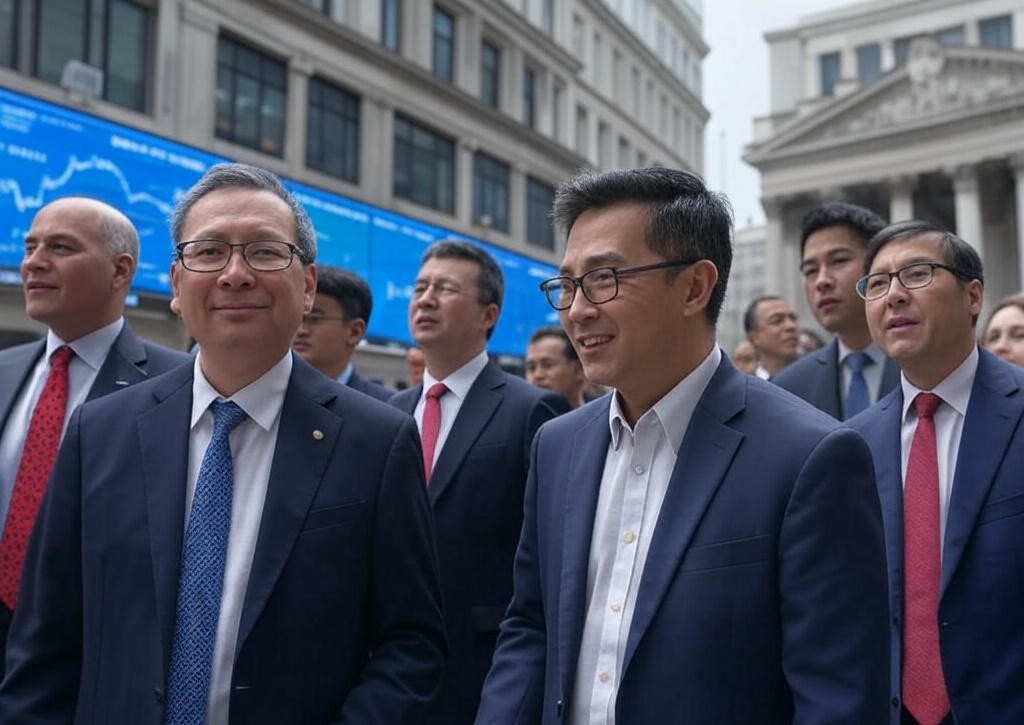The world of global markets is buzzing with news. Two big events are shaping how investors feel and what they expect next. First the U.S. and China agreed to pause their trade war for 90 days lowering tariffs and giving markets a reason to cheer. Second the Bank of England (BoE) cut interest rates but warned that tariffs could still cause problems.

The U.S.-China Tariff Pause: A Breath of Relief
For months the U.S. and China have been in a trade war slapping high tariffs on each other’s goods. The U.S. had raised tariffs on Chinese products to 145% and China hit back with 125% tariffs on American goods. These taxes made things expensive, slowed trade and worried businesses and investors. For example Chinese exports to the U.S. dropped by 17.6% in April and U.S. ports saw fewer ships coming from China.
But on May 12, 2025 the two countries announced a 90 day pause after talks in Geneva. The U.S. agreed to cut its tariffs to 30% and China lowered its tariffs to 10%. This deal is like hitting the pause button on a fight giving both sides time to talk and find a better solution. The news sent stock markets soaring. The S&P 500 in the U.S. had its biggest gain in over a month and Asian markets jumped more than 3%. Investors felt hopeful that a full-blown trade war might be avoided at least for now.
This pause is good for businesses too. Companies like Shein and Temu which sell low cost Chinese products online got some relief because the U.S. also slashed tariffs on small packages from 120% to 54%. Retailers and manufacturers can now ship goods without paying sky high taxes which could keep prices lower for shoppers. But there’s a catch—some experts say the 30% tariff is still high and could reduce Chinese exports to the U.S. by a third. Plus the pause is only for 90 days so uncertainty remains about what happens next.
Why Did Markets Cheer?
The tariff pause boosted market sentiment for a few reasons. First it reduces the cost of goods moving between the U.S. and China the world’s two biggest economies. When trade flows smoothly companies make more money and stock prices go up. Second the deal shows that both countries want to avoid a bigger economic mess. U.S. Treasury Secretary Scott Bessent said “Neither side wants to be decoupled” meaning they don’t want to completely stop trading. This gave investors confidence that a longterm solution might be possible.
However not everyone is fully convinced. The 90-day pause is temporary and some worry that tariffs could spike again in August if talks fail. Retailers like Macy’s and Kohl’s are rushing to ship goods now to avoid future costs which could lead to higher shipping rates. Also the U.S. still has a 10% tariff on most countries and the overall tariff rate in the U.S. is 17.8% the highest since 1934. This means trade is still expensive and prices for everyday items might stay high.
Bank of England’s Rate Cut: A Mixed Message
While markets celebrated the tariff pause the Bank of England made its own big move. On May 8, 2025 it cut interest rates by 0.25% to 4.25%. This was a surprise because not all BoE policymakers agreed on the decision—some worried about the economy while others wanted to wait. The rate cut makes borrowing cheaper which can help businesses and people spend more. It’s like giving the economy a small boost to keep growing.
But the BoE also sounded a warning tariffs are still a problem. Even with the U.S.-China pause global trade is shaky. The BoE said tariffs could slow economic growth and make things more expensive. For example if tariffs drive up the cost of imported goods prices in shops could rise and people might buy less. This could hurt the UK economy which relies on trade with both the U.S. and China.
The rate cut shows the BoE is trying to act fast to support the economy. But some investors think it’s a risky move. Lower rates could lead to more inflation if prices keep rising because of tariffs. Posts on X also showed mixed feelings some called the rate cut a bad idea in “troubled times” while others said it was needed to help businesses struggling with tariff costs.
What Does This Mean for the Future?
The U.S.-China tariff pause and the BoE rate cut are like two sides of a coin. On one side the tariff pause is a positive step that lifts markets and eases trade tensions. On the other the BoE’s warning reminds us that tariffs still cast a shadow over the global economy. Investors are happy now but they’re also watching closely to see if the U.S. and China can make a lasting deal.
For everyday people this could affect prices at stores. If tariffs stay low things like clothes, electronics and toys might not get too expensive. But if the trade war restarts costs could climb. Businesses especially small ones are still nervous because they don’t know what’s coming after 90 days.
The global economy is at a crossroads. The tariff pause gives hope but it’s not a full solution. The BoE’s rate cut is a helping hand but it can’t fix everything. For now markets are riding a wave of optimism but everyone is holding their breath to see what happens next.
